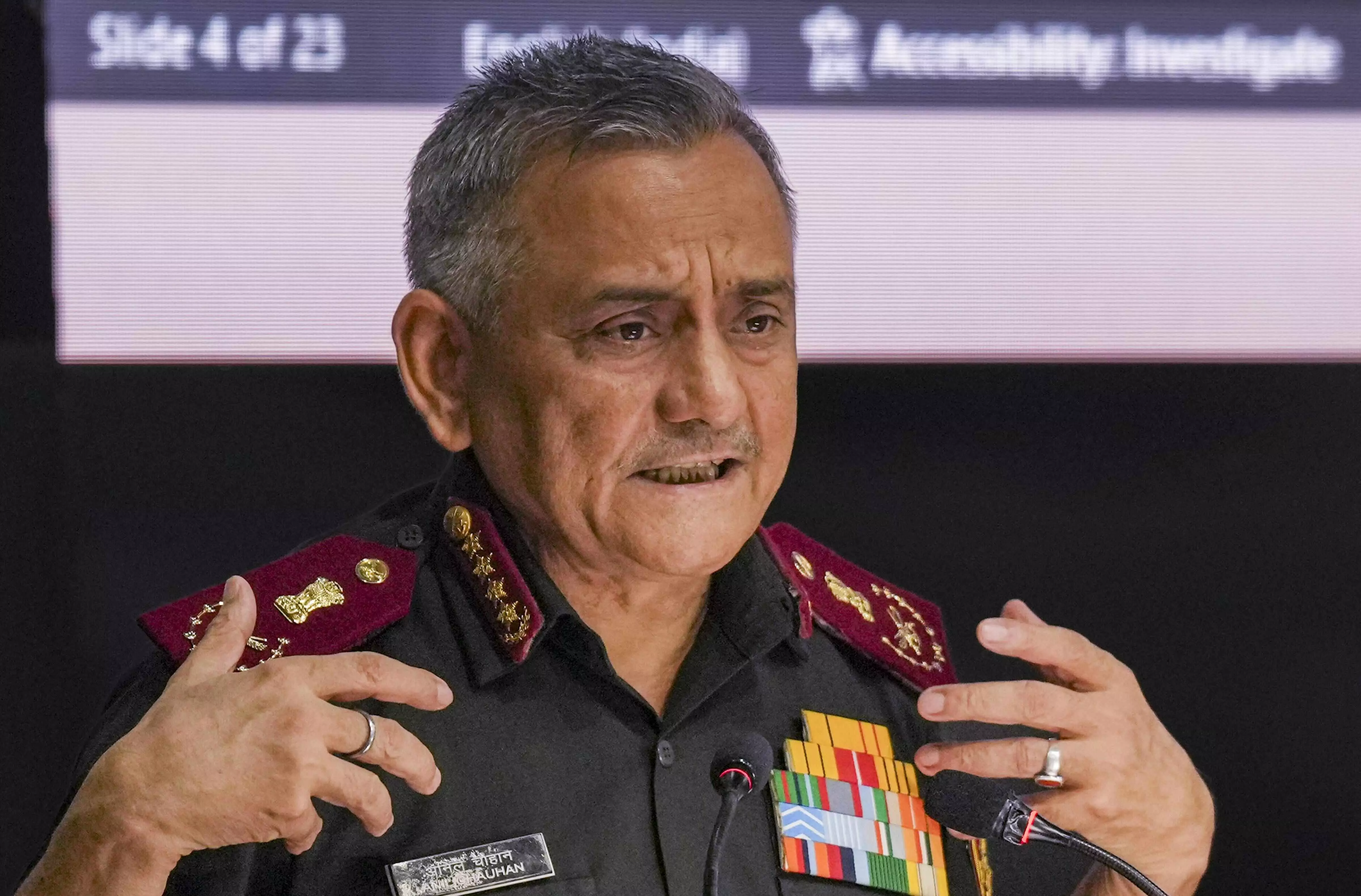Self-reliance in UAVs, counter-unmanned aerial system strategic imperative for India: Gen Chauhan

New Delhi: Chief of Defence Staff General Anil Chauhan on Wednesday said recent conflicts globally have demonstrated how drones can "shift tactical balance disproportionately", and asserted that self-reliance in UAVs and Counter-Unmanned Aerial Systems (C-UAS) is a "strategic imperative" for India. In his address at an event held at Manekshaw Centre here, Gen Chauhan also said Operation Sindoor has shown why indigenously developed Unmanned Aerial Systems (UAS) and C-UAS "built for our terrain and our needs are crucial". A day-long workshop on 'Indigenisation of Critical Components Currently Being Imported from Foreign OEMs in the Areas of UAV & C-UAS' is being hosted by Headquarters, Integrated Defence Staff, in collaboration with the think-tank Centre for Joint Warfare Studies.
The event comes against the backdrop of recent India-Pakistan hostilities, including Operation Sindoor, which highlighted the strategic importance and operational effectiveness of UAVs and C-UAS, the Defence Ministry said on Tuesday. The Chief of Defence Staff (CDS), in his keynote address at the inaugural session, said drones are proof of reality, and their widespread utility in recent conflicts demonstrates how drones can shift tactical balance disproportionately to their size or price. "Asymmetric drone warfare is making large platforms vulnerable and driving militaries to rethink the conceptual aspects of air doctrines, development of C-UAS and adaptive moves of engagement," he said. The CDS also said that during Operation Sindoor, Pakistan used unarmed drones and loiter munitions on May 10. But "none of them could actually inflict any damage to Indian military or civilian infrastructure", he said. "Most of them were neutralised through a combination of kinetic and non-kinetic means. Some of them could be recovered in almost intact conditions," Gen Chauhan said. The CDS emphasised that Operation Sindoor has "shown us as to why indigenously developed UAS and C-UAS built for our terrain and our needs are crucial".
Underlying the ethos of Atmanirbharta, Gen Chauhan asserted that "we cannot rely on imported niche technologies that are crucial for our offensive and defensive missions; we must invest, build and safeguard ourselves". "Dependence on foreign technologies weakens our preparedness, limits our ability to scale up production, results in a shortfall of critical spares for sustenance and round-the-clock availability." Gen Chauhan cautioned that foreign weapons, sensors and their capabilities are known to all, and adversaries can "predict our tactics and doctrinal concepts" based on the capabilities of these systems. "But, if it developed on our own, then an element of surprise can be added, at least in initial encounters." Military leaders, defence experts, scientists, policymakers and private industry representatives gathered here to develop a "strategic roadmap" for indigenisation, with an overarching aim to reduce dependency on foreign companies for critical UAV and C-UAS components. "In the rapidly evolving landscape of non-contact warfare, UAVs have emerged as a transformative force. For India, self-reliance in UAVs and C-UAS technologies is not only a strategic imperative, but it is also about empowering itself to chart its destiny, safeguard its interests and seize the opportunities of the future," the CDS wrote in his message for the workshop.
In his address, he emphasised the importance of technology in warfare and underlined the evolutionary phases through which rifles, guns, ammunition and other platforms have gone through to become smaller, more potent, and convenient to use. "In today's warfare, you cannot win with yesterday's weapon systems. Today's warfare has to be fought with tomorrow's technology," the CDS highlighted. Operation Sindoor and the learnings from it were the focal points of this workshop, and in the first technical session, many speakers made a reference to it. India launched Operation Sindoor early on May 7 with precision strikes on multiple terror infrastructure in Pakistan and Pakistan-Occupied-Kashmir, in retaliation for the Pahalgam attack that claimed 26 lives. The Pakistan military, in retaliation, targeted Indian military installations and civilian areas. India conducted counter-offensives against it and damaged several key air bases of Pakistan, including the Noor Khan base and the Rahim Yar Khan base. Indigenous technology and platforms have played a key role for the Indian military, and the decisive action has given a greater push for self-reliance in the defence sector.
Brigadier Anshuman Narang (retd) made a presentation on 'Operation Sindoor: Importance of Indigenisation and Lessons Learnt'. He cited the use of drones and counter-drone systems in the Russia-Ukraine war and the Israel-Iran conflict to underline their power driven by technological innovation that can make even large installations vulnerable to their attacks. A "sophisticated technology cat-and-mouse game" is being played out there, and India will also have to be prepared as "no drone is small to be ignored," Narang said. He asserted that indigenisation should not just be limited to a drone or a technology, but the entire architecture. Chief of Integrated Defence Staff Air Marshal Ashutosh Dixit, in his message for the event, said, "India today stands at a strategic inflection point". "Our armed forces and paramilitary agencies increasingly rely on UAVs for ISR (intelligence, surveillance and reconnaissance), targeting, logistics and precision strike. However, the core ecosystem is still significantly dependent on foreign technology," he said. India's vision of Atmanirbhar Bharat and Make in India in defence production necessitates a "comprehensive roadmap" to achieve self-reliance in drone and counter-drone technologies, Air Marshal Dixit added. The event is expected to serve as a catalyst for innovation, knowledge sharing, and long-term capability building in unmanned systems. An exhibition of defence products by different companies was hosted at the venue.



